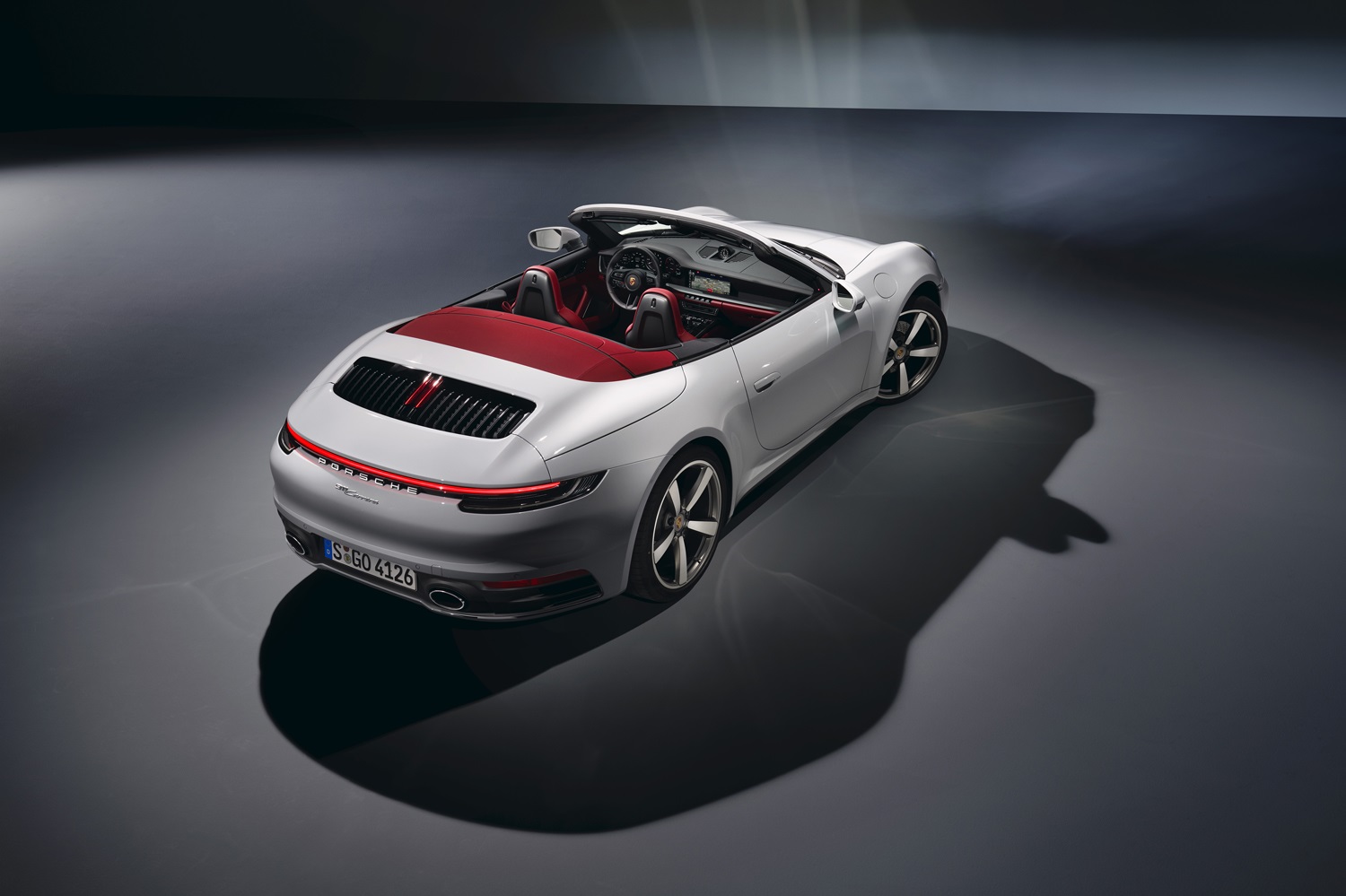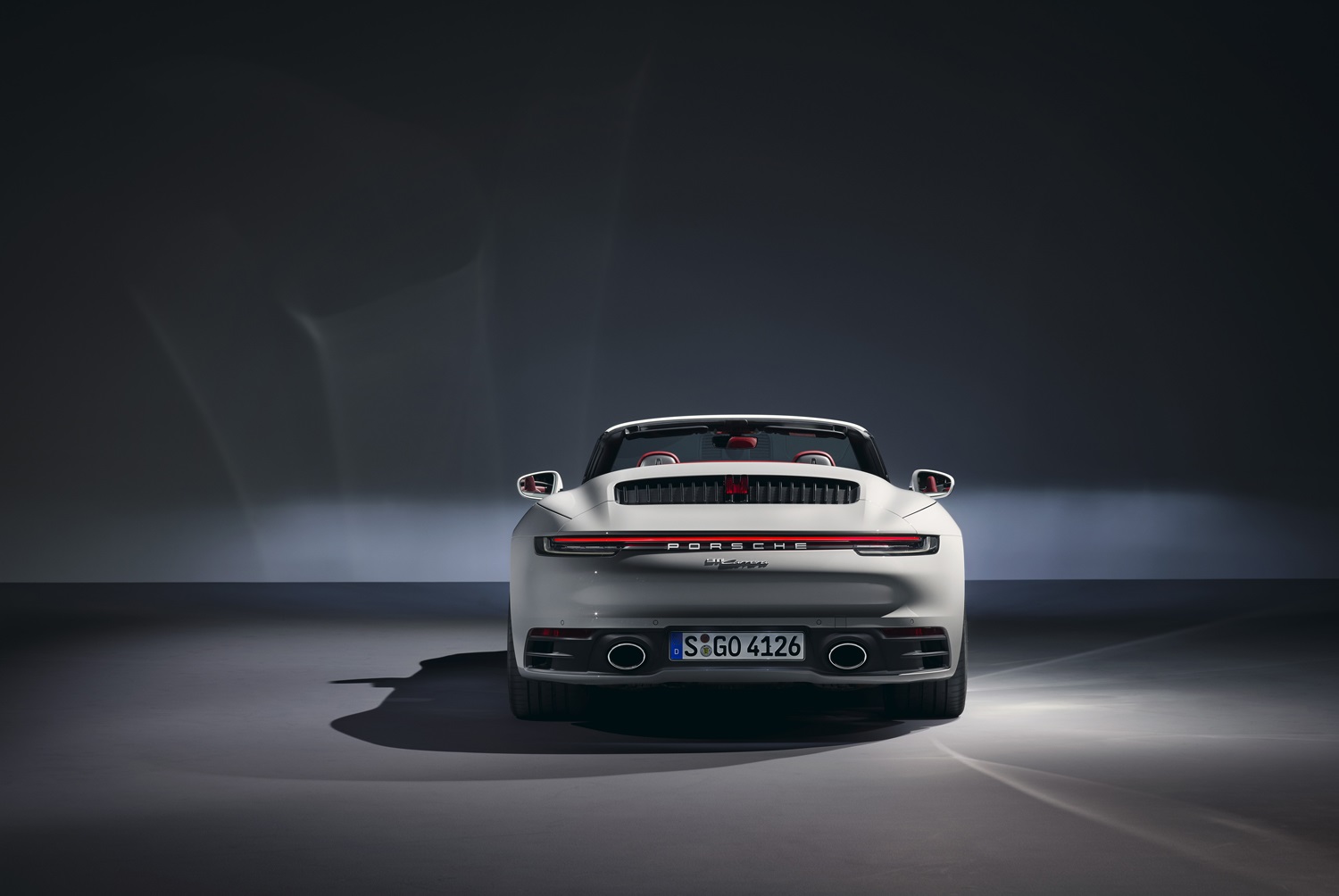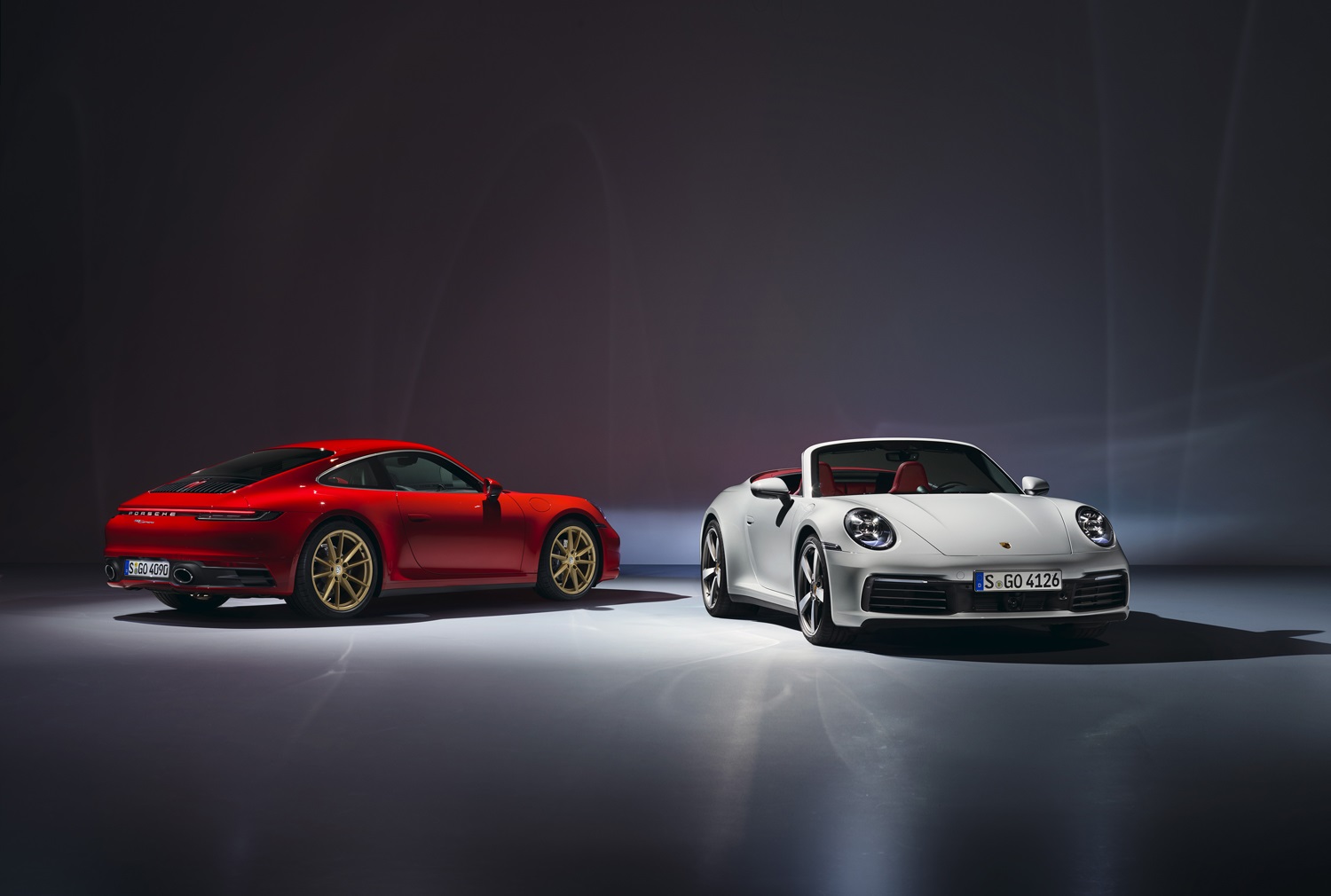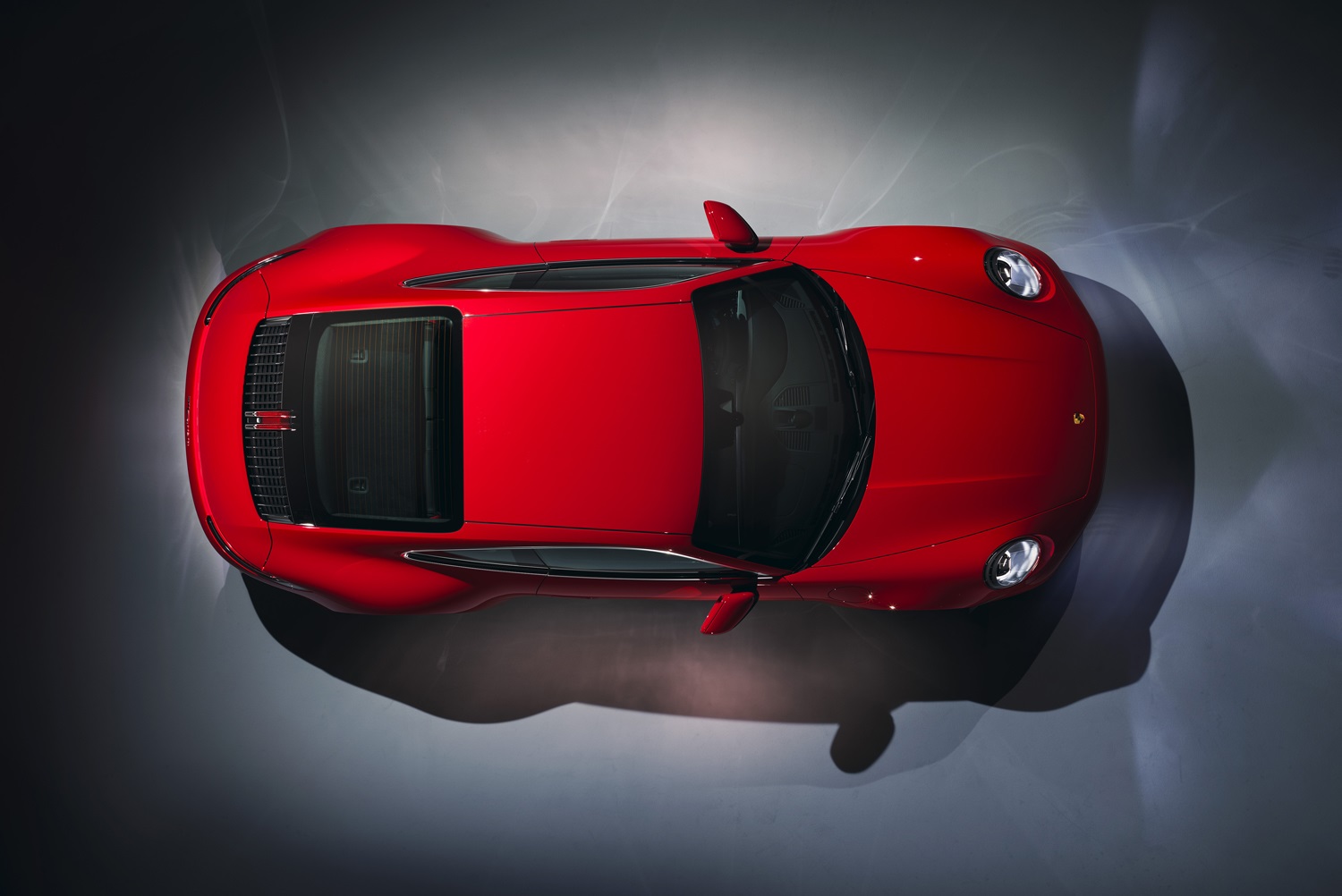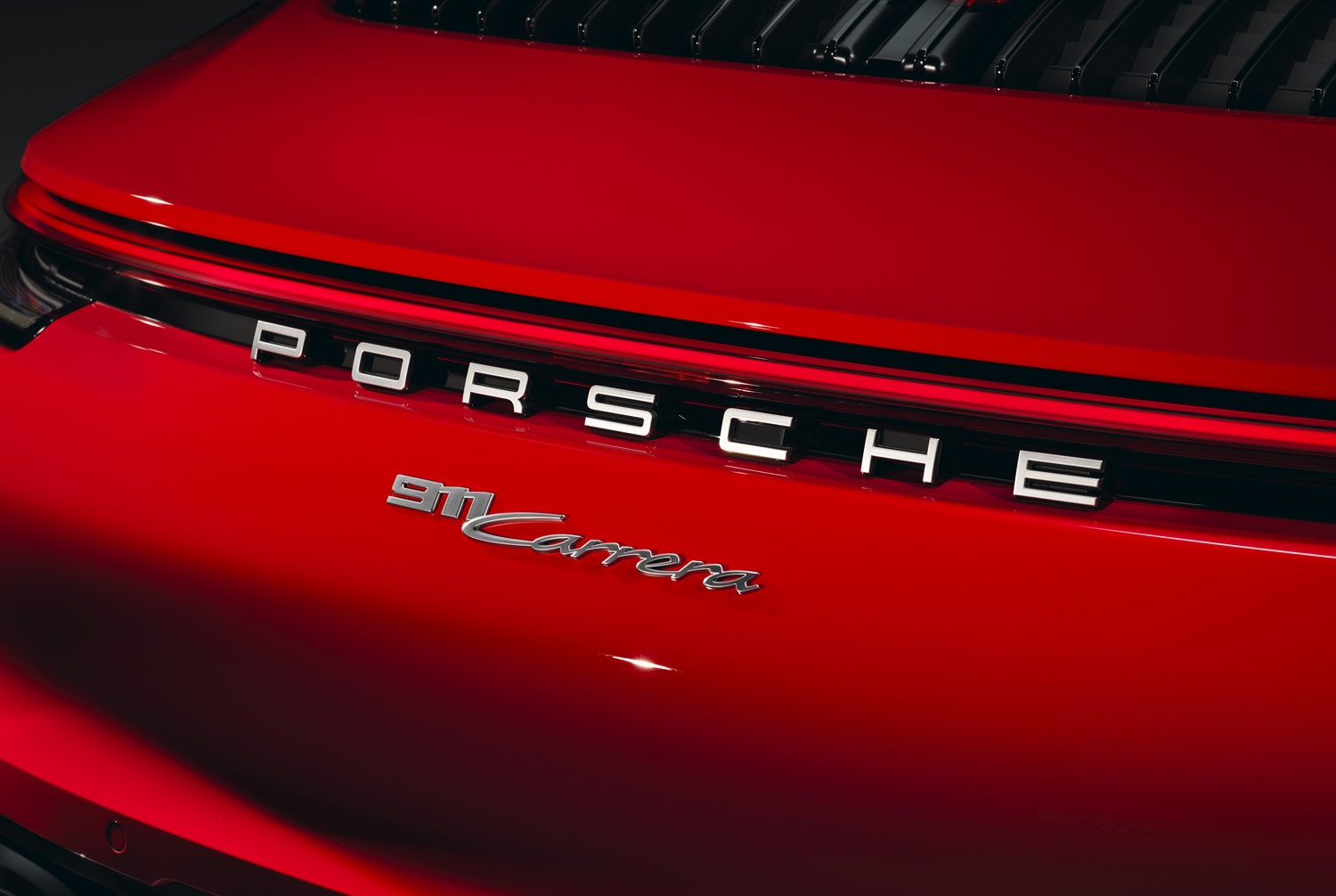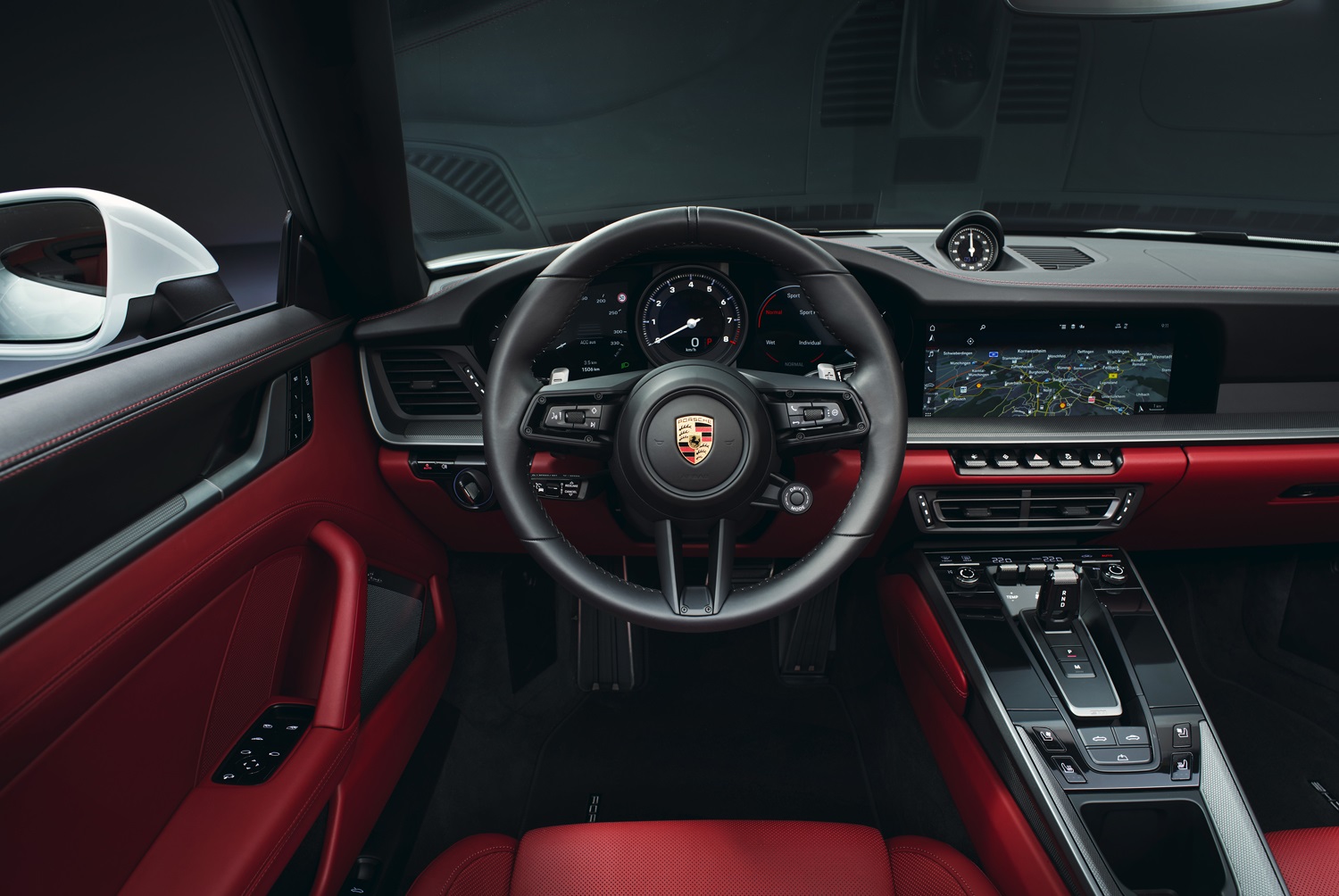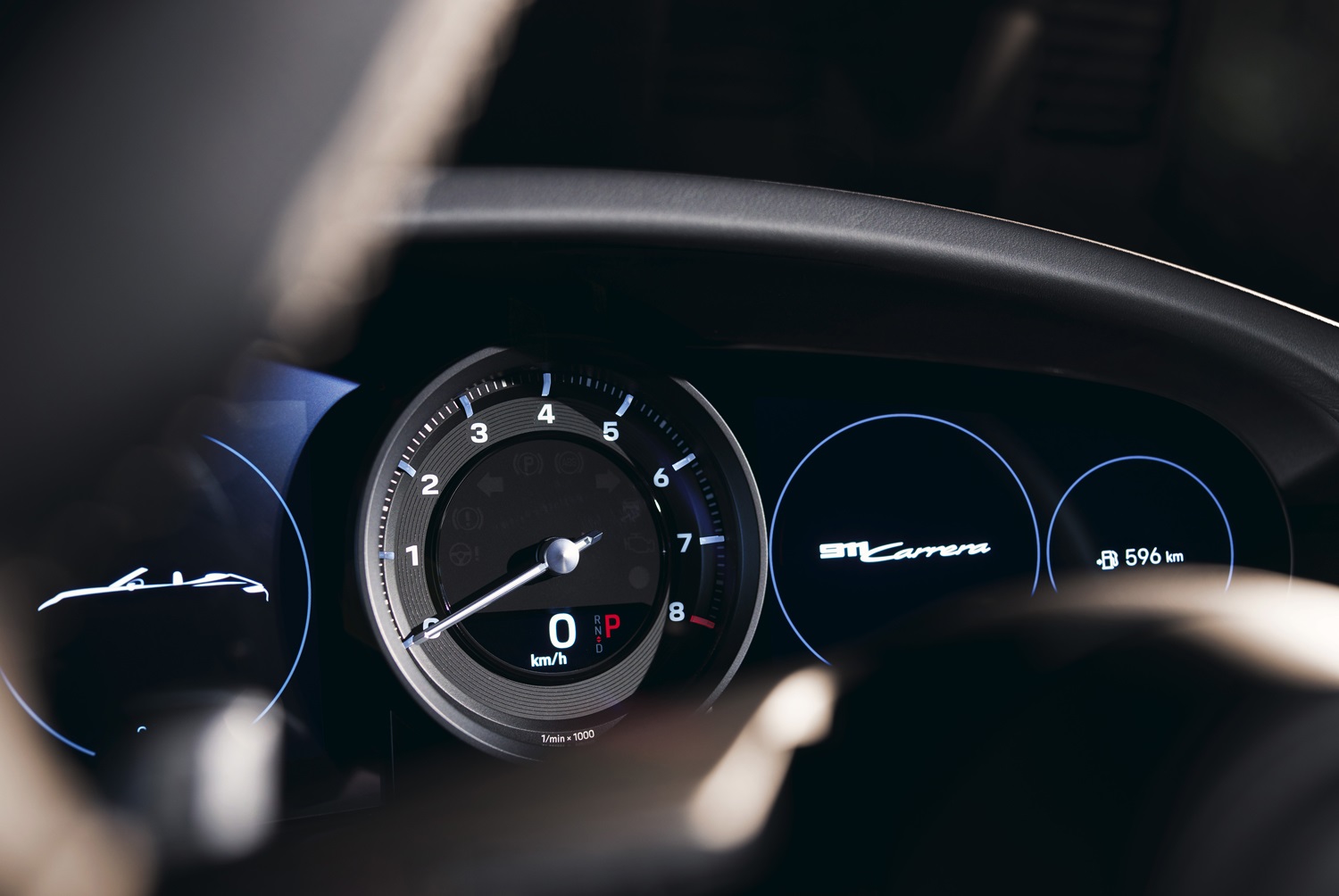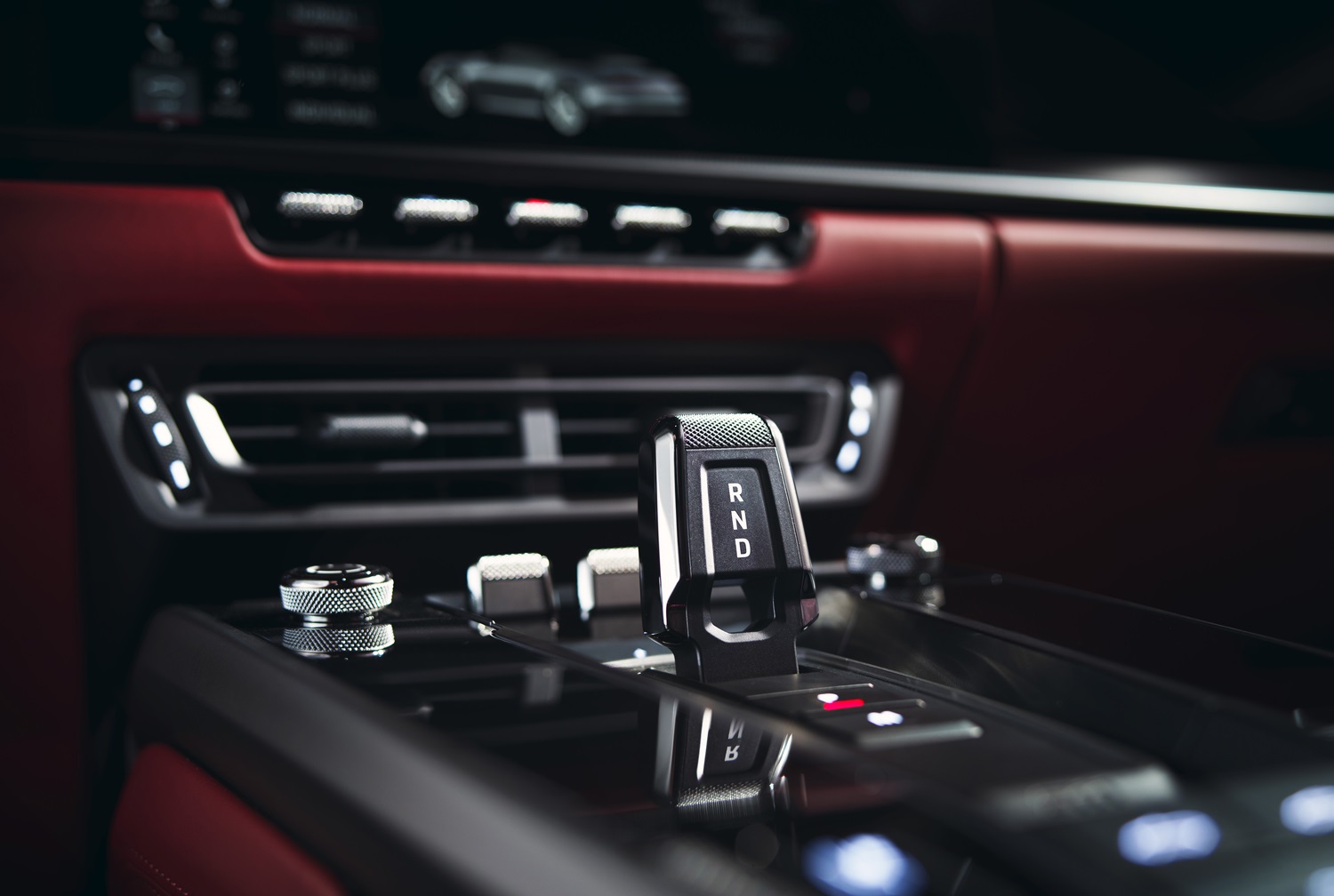Porsche revealed a small piece of a big puzzle when it released the eighth-generation 911 during the 2018 Los Angeles Auto Show. Now, the German firm provided us with two additional pieces by introducing the entry-level 911 Carrera and its convertible variant online a few months before they’re scheduled to reach American showrooms.
The 2020 911 Carrera is significant, because it’s the foundation that the rest of the range will be built on for years to come. It shares its twin-turbocharged, 3.0-liter flat-six engine with the newly minted 2020 911 Carrera S, but its output drops to 379 horsepower at 6,500 rpm and 331 pound-feet of torque. The six spins the rear wheels through an eight-speed, dual-clutch automatic transmission. While Porsche has pledged to keep the manual transmission alive for as long as possible, a stick won’t be available at launch.
“Manual transmission availability for the 992-generation 911 will be announced at a later point in time. It is planned for American-spec cars,” a company spokesperson told Digital Trends via email.
The 911 takes 4.0 seconds flat to reach 60 mph from a stop, while the convertible performs the same task in 4.2 seconds. Top speed checks in at 182 and 180 mph, respectively. You can tell whether it’s a Carrera or a Carrera S by looking at its exhaust tips. The base model has two rectangular exhaust tips, while the S comes with four round ones. That’s the only major visual difference between the two variants, according to Porsche.
It’s the same story inside, where most of the Carrera’s interior bits and tech features come straight from above. That means it’s more digital than ever before. It receives many of the features we’ve come to appreciate while driving the Cayenne and the Panamera, including an instrument cluster made up of two large, driver-configurable screens positioned on either side of an analog tachometer. The center stack is dominated by a 10.9-inch touchscreen for the infotainment system. It has gorgeous graphics, is intuitive to use, and offers online navigation with real-time traffic information.
On sale now across the United States, the 2020 Porsche 911 Carrera Cabriolet carries a base price of $110,200, a figure that represents a nearly $13,000 increase over its hardtop counterpart. Both cars might make an appearance at the 2019 Frankfurt Auto Show in September, and they’ll begin to reach showrooms in early 2020.
Editors' Recommendations
- Tesla to begin production on new, more affordable models
- Porsche’s most powerful production car is an EV
- Cadillac aims to balance its lineup with a small electric SUV
- Acura’s resurrected ZDX SUV is an EV shortcut
- Mercedes-Maybach EQS SUV is old-school luxury — electrified


